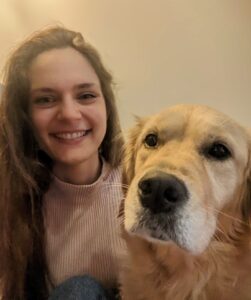Let’s Get Real!

In this post, Research Assistant, Laura Wauthier shares her experiences working with the YARNS Transitions team on the first phase of the project. Laura will soon be moving to Oxford to continue her professional career, and we wish her the absolute best.
If you are interested in working with us, please see the advert here: Research Fellow (YARNS)
________________________________________________________________________________
The YARNS Transitions project aims to develop a nurse-led intervention to support wellbeing in young adults with acquired brain injury. This holistic focus is a much-needed addition to current practice, as evidence continues to show that mental health is an integral part to positive recovery and rehabilitation. But with so many competing priorities, complex individual needs, and often limited resources, how can we go about accomplishing this task?
Enter: realist evaluation. When I joined project YARNS Transitions nearly six months ago, I had no idea what it was either. But through my work with the incredible team and with their patient guidance, I came to grips with this philosophy and got to see the process in action. Let me take you on a quick tour of this approach and highlight some of the main theories that have started to guide our journey.
At the core of the realist evaluation is an effort to create a theory of WHAT works, for WHO, and in what CIRCUMSTANCES. In other words, the effectiveness of an intervention is imbedded in its context and will depend on who the intervention is for. As an example, a young 20-something year old with brain injury is going to have different rehabilitative goals around return to work and social context than someone who is in their 70s and retired. Compare also someone living in rural Scotland and someone living in metropolitan New York: they will have a very different context with regards to healthcare access and costs, transport, green space, and other services. Other important personal and contextual factors include culture, income, family support, and pre-existing conditions. This means that when we look at published studies, we are not just looking at whether an intervention worked, but WHY it worked (or didn’t), and who it might have worked better for. With these concepts guiding our process, the team set off to carry out the first round of literature review, to inform the theoretical basis of our intervention. We screened over 1,000 studies using stringent criteria, and in the end, we were left with 17 papers from which to start creating theories.
Ahhh, but how do you create a theory, you ask? Well it’s actually easy as cake! Much like creating a recipe, you have to describe how to bring together the right ingredients (materials) and combine them in just the right way (procedure), to get a tasty desert. But even with the best cake in the world, serve it to the wrong person (e.g., allergies, diabetes), or in the wrong context (few people want a cake when swimming laps), and it won’t be very well received, so that also needs to be accounted for. Thus, realist theories take the form of Context + Mechanism = Outcome. Using our cake example: [Context: hungry patron in a cafe with no food allergies] + [Mechanism: flower, eggs, chocolate, and sugar, baked according to instructions] = [Outcome: happy satisfied customer]. While not as tasty as our cake example, the theories which emerged from the published studies started to paint a complex and nuanced picture. In the end, we formulated around 20 theories, covering many dimensions: from the significance of social connection to the importance of providing support to family members, and from the value of providing choice in the rehabilitative process, to the central importance of ensuring accessibility.
Taking a step back from these individual theories, it seemed something larger than the sum of its parts was coming into focus: ideas of “wellbeing” and “wellness”. While there is no real agreement in the academic literature on how many dimensions there are or what exactly is included under these umbrella terms, there is agreement on some central principles. Firstly, both concepts treat persons as whole individuals with parts that cannot be dissociated but must be encouraged to work in harmony. Secondly, is the idea that we must not simply avoid illness, but that there is a positive aspect that we can strive towards, linked to ancient Greek concepts such as eudaimonia and hedonia.
We often read in survivors’ stories how acquired brain injury is traumatic, and that emerging on the other side is like a journey fraught with struggle and entwined with changing realities. Something like we find in the Greek myths, where the success of the heroes requires courage, hope, perseverance, and camaraderie. Although I do not know what the final intervention will look like, I can hope that through this research we help all those with acquired brain injury on their individual journeys and ensure that they do not feel alone while doing so… with a few slices of cake along the way too of course!
Laura Wauthier

I completed by BSc in Natural Sciences (Zoology) at Cambridge and then did an MSc in Mind, Language, and Embodied Cognition and a conversion into psychology at the University of Edinburgh. I combined my passion for animals and psychology in my PhD, which looked at children’s relationships with animals and worked alongside the Scottish SPCA to develop their Animal Guardians programme. Since finishing my PhD, I have been working on two projects: as a research assistant on the first stages of project YARNS, and designing Paws on Campus, a dog-assisted intervention for university students. I currently work with my dog Lola (through Therapets), and have been keenly interested in human-animal interaction and the benefits of nature- I hope to continue bringing these passions together in both my research and practice!




Recent comments